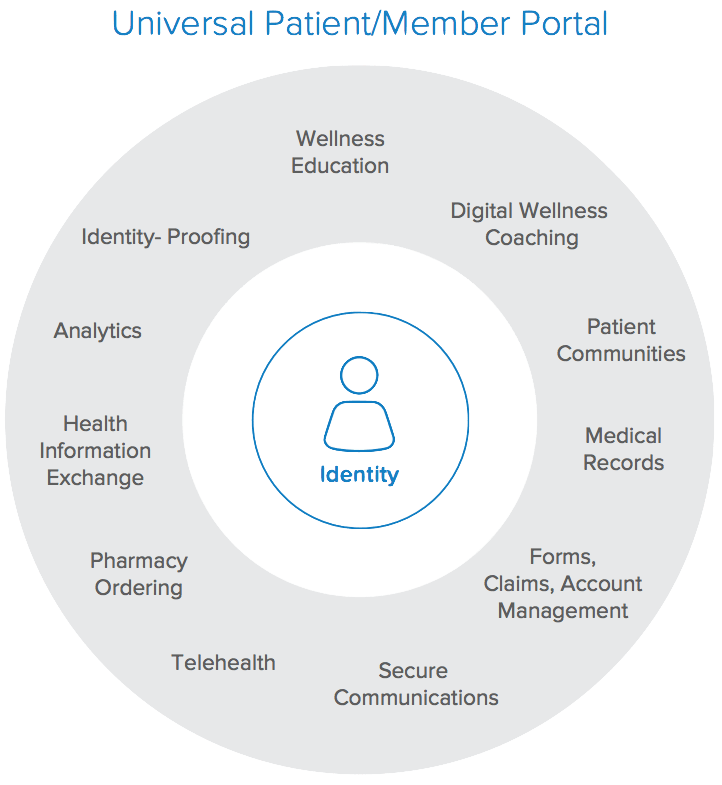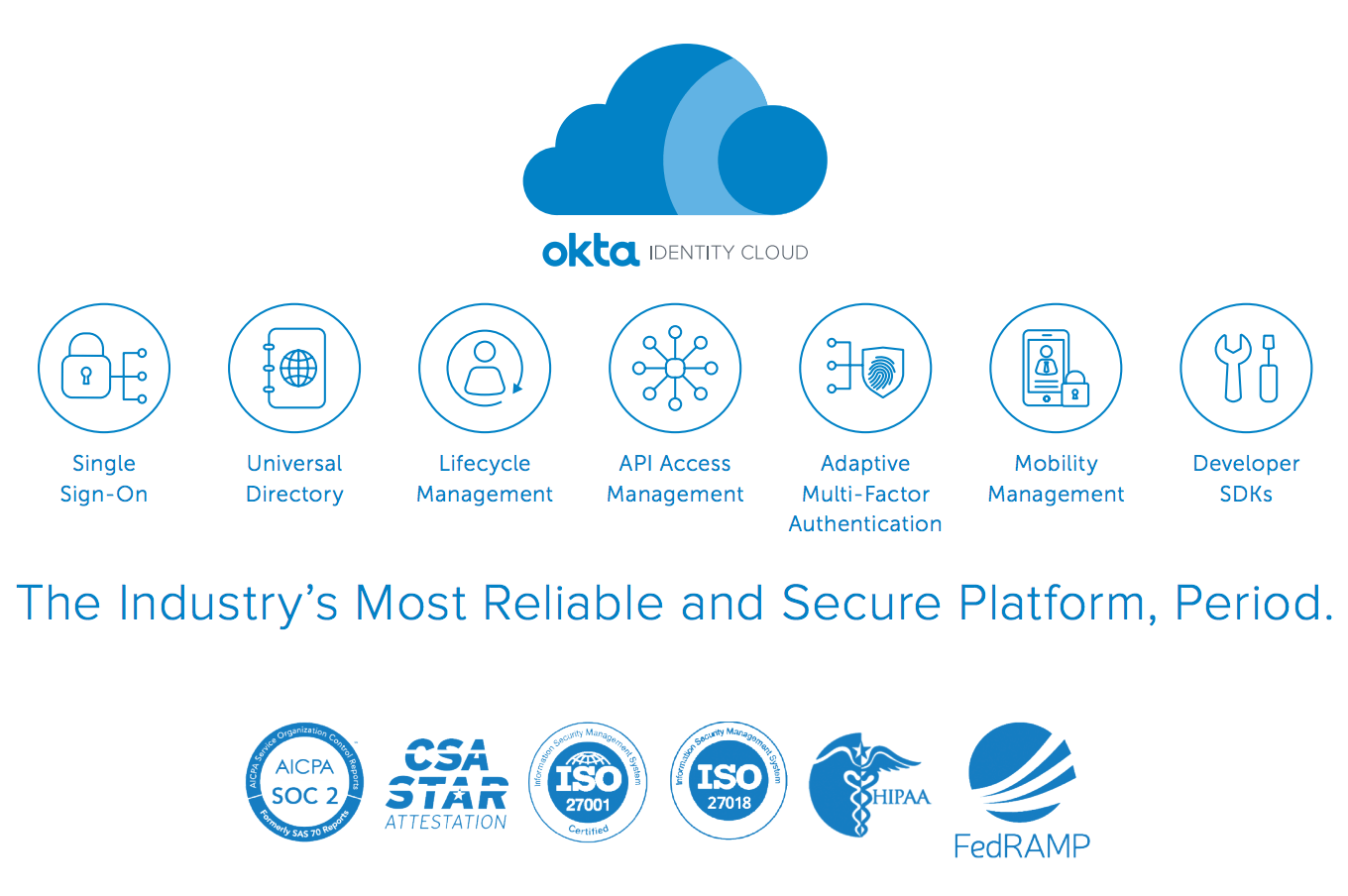How to Make Patient Portal Sign-In Easy and Secure
People want access to all kinds of information. From anywhere. At anytime. And personal health information – test results, medical records, etc. – is no exception. This whitepaper discusses the benefits of patient portals. It explains the identity challenges medical providers are encountering today and reveals why cloud identity is the answer to these problems.
Patient portals are powerful. With them, patients have personal medical information and resources at their fingertips. Literally. Patient portals enable patients to quickly and easily view test results, request prescription refills, research diagnoses, and communicate with their physicians. With 24-hour access, portals allow patients to engage in their health, on their own time. Gone are the days where patients have to wait on hold with their doctors’ offices for 20 and 30 minutes at a time. According to a recent survey conducted by athenaResearch, 87% of patients today want electronic access to their health records, and overall portal adoption in the US is about 29%. However, user access friction commonly limits the true potential that these projects have. Registration is clunky, users must remember multiple usernames and passwords, and adoption suffers. Cloud identity is a key foundational element medical providers need to solve these core usability issues and increase portal adoption.
Patient portals don’t just benefit patients; they’re also important for healthcare providers. As healthcare in the US transforms from a fee-for-service model to one that’s focused on quality of care, effective online tools are a way for medical providers to build long-term patient relationships. With the proliferation of care clinics in the US, primary care has become increasingly competitive. Patients don’t automatically have a primary care provider anymore; rather, they see the first available physician as needed at a care clinic. Patient portals are a way for primary care physicians to gain that competitive edge over care clinics. They make patients feel more empowered and involved in their care. And, with 24/7 access to portals, patients are more engaged. According to athenaResearch’s survey, patients who sign up for a portal on their first doctor visit are 13% more likely to return to that practice again (80% return rate vs. 67% return rate).
Patient portals also significantly reduce operational costs for physicians’ offices. They automate processes by, for example, allowing patients to schedule appointments online, as opposed to scheduling through a call center or office receptionist. They also give patients access to their medical records and test results. For a routine question, patients can simply check this information online. Portals also send automated appointment reminders, reducing patient no-show rates. And, with medical bills and claims information in patient portals, the likelihood that patients pay bills on time also increases.
Furthermore, portals help patients get to the right point of acuity. There are many options for healthcare today—community clinics, primary care, urgent care, telehealth, etc.—and larger practices provide many of these services to patients. But, to minimize cost, it’s important that patients use the correct provider on their first visit. Portals provide the information patients need to book the correct appointment for the problem they are experiencing.
Patient portals are a huge asset for both medical providers and patients themselves. But, there are several identity challenges with patient portals. First, they are very fragmented. Often, a patient has to re-enter his username and password each time he moves to a different part of the site. That means if a patient logs in to check a recent test result, emails his physician a quick question about those results, and schedules a follow-up appointment, he is potentially entering credentials three separate times. This is time consuming and inconvenient for patients and can lead to reduced portal adoption. There are also security risks with patient portals. Patients are susceptible to phishing and other social engineering attacks. Medical providers’ infrastructure is susceptible to malicious attacks as well, putting personal health information at risk on both sides. Also, as patient portal popularity continues to increase, the infrastructure of many providers is insufficient. It can’t easily scale to accommodate millions of patients logging in at the same time.

Cloud identity solves many of the challenges physicians’ offices are encountering with patient portals today. It’s secure, agile and scalable. Cloud identity was built to scale; a cloud service can handle millions of patients logging in to a portal at the same time. Cloud identity also has zero downtime. Cloud services don’t need to be taken offline for maintenance or patching, which is critical as portals demand 24/7 access to be successful. Cloud identity also enables system administrators to quickly integrate new technologies and add new applications (both third-party and custom) to portals. Because patient portals contain sensitive PHI and PII, including medical records and billing information, security is also critical. Some cloud identity solutions offer their own multi-factor authentication (MFA) solutions or integrate with third-party MFA providers. MFA requires patients to provide an additional piece of information (a PIN number, for example) beyond just their username and password. Patients can opt in for MFA to better secure their PHI.
Cloud identity is a service; it eliminates unnecessary expenses for medical providers associated with on-prem systems such as application maintenance and upgrades. It also reduces operational costs by automating processes. Self-service password reset functionality, for example, enables patients to go through a few basic steps to reset their portal passwords as opposed to contacting their physicians’ offi ces and requesting password resets. Cloud identity also provides a much better user experience for patients. With cloud identity, patients don’t have to authenticate every time they access a new section of a portal. Rather, patient portals are seamlessly intertwined, so that when patients login, they can access all the information they need (medical records, billing, scheduling, etc.). Some cloud identity solutions also have social login, which enables patients to authenticate with their Facebook, Twitter, Google or LinkedIn username and password. Recognizing that a patient’s world extends far beyond a desktop or laptop, cloud identity takes a modern approach to portals. Cloud identity solutions can off er the same important information with the same user experience on a mobile device. This can lead to increased reliance on portals and decreased reliance on human intervention (call centers, nurses, receptionists, etc.).
Portals can benefi t both patients and medical providers tremendously. But simply rolling out a portal isn’t enough. Among other things, medical providers need to consider patient user experience, how to keep PHI safe, scaling to meet peak portal demand periods, and how they will continue to innovate and integrate new technologies. Cloud identity provides the framework for which to accomplish this. It allows medical providers to focus on what’s really important: patient care.
